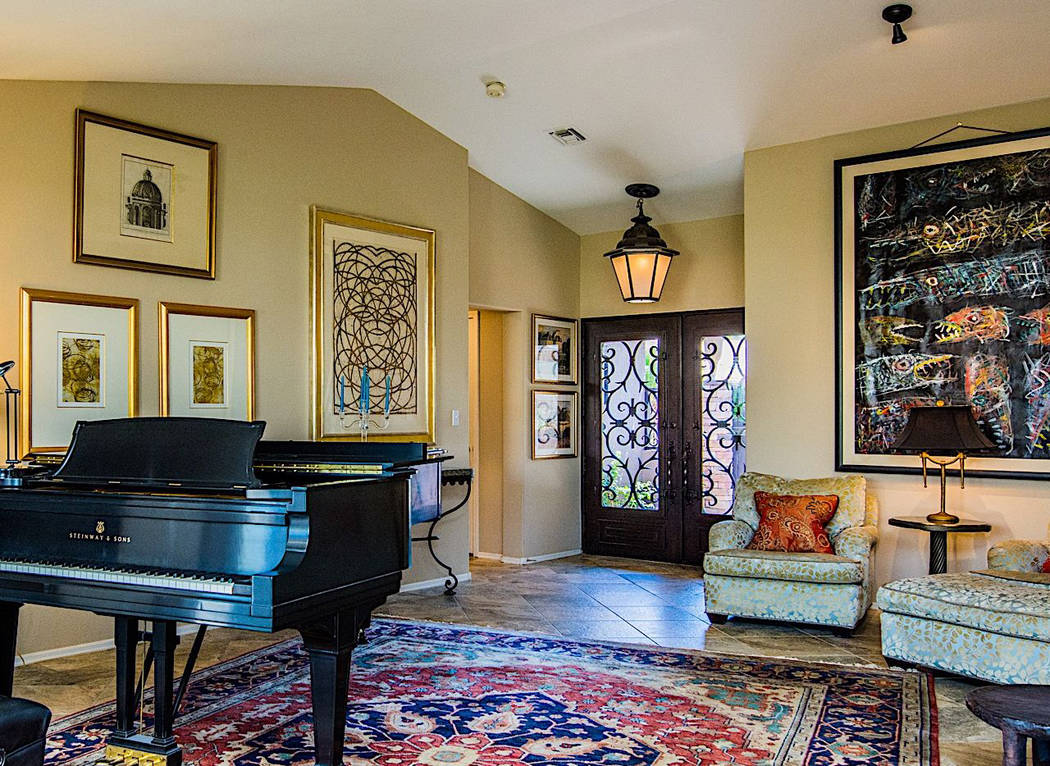When shopping for chandelier, start online for style, price ideas
Dear Gail: We’re looking to replace our foyer chandelier. We still have the builder’s original. We’re wanting something with more of an impact, as this one has always felt too small. Can you give us some guidance on size and where to start? — Roger
Dear Roger: Most times the chandeliers from the original builder are much smaller than they should be, because of economics. The builder knows the chandelier is not going to make or break the sale. I know, as I’ve specified many chandeliers for my builders, although my selections were influenced and limited by price.
First, where can you look for something different? I’d start by searching online, but I’m figuring you’ve already started there. This will give you a good starting point for style and price. One word of warning is to make sure you thoroughly check the sizes, as the picture can be deceiving.
If you’re not comfortable with ordering online, yes, we still do have lighting specialty stores in town. Along with what is in their showrooms, they will have catalogs of different manufacturers to order from.
Bring in pictures of what you found, as they may be able to get the same for a better price or have another manufacturer with similar items. The nice thing about working with a lighting store is that they will help guide you with your purchase as far as size and installation.
Now, what size to buy? The general rule of thumb for the diameter is to add the width and the length of your room together. If your foyer is 10 feet by 12 feet, you would add 10 and 12 for a 22-inch diameter.
I’ve had people say they really didn’t know where their foyer ends, since it opens to other rooms. Since the chandelier should be hung from the center of the foyer, use that as your reference point.
Sometimes this diameter can feel small if your foyer is open to other rooms, so I’ll add half the height of the room to the diameter. So if your room is 10 feet wide by 12 feet long and 10 feet high, you would add 5 to your 22-inch diameter for a 27-inch diameter. I would also use this approach for higher ceilings, as the chandelier will look smaller the higher it is.
For the height of the chandelier, you can use a common rule of thumb of multiplying 2.5 to 3 inches by each foot of ceiling height. So for an 8-foot ceiling, your chandelier should be 20 to 24 inches high; a 12-foot ceiling needs a chandelier with about 30 to 36 inches of height. This is the height of the chandelier without the chain or rod it is hanging from.
In regards to the overall size of the chandelier, if there’s one you fall in love with and it’s bigger than these guidelines, go for it. Proportion is important. But I would rather see a larger, attention-getting chandelier than one that you don’t even notice. You don’t want to have a postage size chandelier in a grand foyer.
Now that you have your dimensions, where do you hang it? If you have a low ceiling, the bottom of the chandelier should be 7 feet from the floor. If your foyer has a high ceiling and a window above the door, the chandelier is normally centered in the window so that it can be seen from outside. However, this is not a hard and fast rule.
If you have a two-story home and have stairs in the foyer, hang the chandelier at a height where it doesn’t sit completely below the second floor. A general guideline is that, if you were at the top of the staircase, the top of the chandelier would be at eye level.
When you’re ready to install your new chandelier, it’s always best to consult with a licensed electrician. Being you’re upgrading from your builder grade, there’s a good chance it will weigh more and require special mounting hardware.
It’s so important to have it installed correctly. Think of how much time it will take you to install it versus hiring someone who does it every day.
Know that there really are no hard and fast rules. These measurements are basic guidelines; each home is different. As in all design, there are many variables, such as personal taste, the size of a room, how you want it to feel and architectural features. You might play with the height and size based on the type of chandelier and how it will look in your room.
The foyer is one of the most important areas in your home. It gives the first impression and sets the tone for the rest of your home. Make this a statement piece and give your foyer the treatment it deserves versus being an area that you and your guests just pass through.
Gail Mayhugh, owner of GMJ Interiors, is a professional interior designer and author of a book on the subject. Questions may be sent by email to GMJinteriors@gmail.com. Or mail to 7380 S. Eastern Ave., No. 124-272, Las Vegas, NV 89123. Her web address is www.GMJinteriors.com.





























